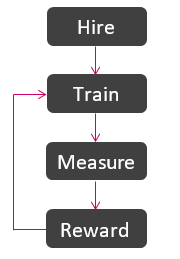Finding gaps in your processes can be an opportunity to engage with staff and improve customer experience.
A Measure of Excellence
MSI has sent evaluators into hundreds of businesses and institutions that range from hotels, restaurants and retail stores, to hospitals and health care centers. Our question sets, and the data our evaluators return, have informed management and C-level leadership since 1954, helping them shape the strategies that guide consistent service and ambiance.
Clients who use our data as part of their employee measurement programs often report double-digit improvements in the areas we focus on. A national restaurant chain has engaged MSI for years to help ensure employees are following established steps of service—steps that are proven to boost customer service and revenues. The most impactful gain was made in promoting the chain’s innovative, handcrafted beers. In 2006, MSI evaluators reported that bartenders were telling just 34 percent of their guests about these beers. Then, our client used MSI data to inform their management and training conversations. By 2014, bartenders were talking to 74 percent of their customers about their handcrafted beers.
With MSI data, our client enhanced their management conversations with bartenders, and over time they achieved the results they wanted. Anecdotally, we know that consistently giving customers interesting choices creates an optimal experience. And it’s the heart of hospitality.
Repeatable Steps that Make an Impact
To maintain an optimal customer experience, the most successful companies we work with hire the best employees, train them, measure their performance, and then continue to retrain or reward employees on an ongoing basis. They do this in increments and they route this data to their HR and training organizations and use it to shape their hiring, training and retention strategies.
Training and coaching influence employee job performance and contribute to lasting job satisfaction. Companies that keep their employees engaged through training and consistent feedback gain a retention edge. Research has shown that employees welcome regular feedback, coaching and training—not just when they are learning their jobs, but throughout their tenure with a company. These activities reinforce an employers’ commitment, not only with their employees, but with the business. And retention saves money. Research has found that companies spend an average of $4,000 to replace an employee; specifically, the cost was about $2,000 for blue collar employees and up to $7,000 for professional and managerial employees.[1]
And, in the restaurant industry, a 2013 national study by the Industrial and Labor Relations School at Cornell University [2] reported that high turnover leads to distractions and disruptions, which can impede sales and customer service.

Data Can Help Companies Flourish… If They Use It
Some clients have received our data showing gaps in customer service and processes, but they have not leveraged it to make lasting changes. Here are a few examples that include ideas for how these clients could have used the data we collected to enhance employee training, customer experience, and business results.
What causes poor service?
A consumer goods client with locations across the United States asked us to conduct in-person mystery shops of their sales staff, as well as their telephone procedures. They wanted to measure level of service and friendly assistance, in-depth product knowledge, and store ambiance.
To our delight, our clients’ telephone procedures were right on target—most locations scored high. But we noted several troubling trends across store locations, which likely pointed to larger training issues. First, we noticed that while salespeople were mostly knowledgeable about their products, they did not engage with customers. Our evaluators walked around for more than 20 minutes in many locations and had to make the initial effort to engage sales staff. Generally, no one welcomed us or asked if we had questions.
In one location, we queried a salesperson about their business-specific products. We were told they didn’t carry what we were looking for. We later learned that the product we asked about was a cornerstone of our client’s inventory—our client sold what we were looking for, but their salesperson may not have known about it.
The client continued mystery shopping for several years, but nothing changed. Telephone procedures remained high, and sales staff continued to ignore customers when they visited the stores. Leadership reviewed the data during our annual client review, but they didn’t use it to coach or reward sales staff. In our view, leadership missed an opportunity to use MSI data to engage their sales staff, improve their customers’ experience, and potentially increase revenue.
Use data to buck the status quo
One of our service industry clients asked us to perform similar, company-wide evaluation of telephone procedures, as well as on-site mystery shops.
Scores for initial impression, service and closing the sale were below 50 percent on the phone side. Common courtesies, such as telling callers why they were being placed on hold and thanking them for holding, were missing from the agents’ phone process. Representatives rarely asked potential customers for their contact information or attempted to close a sale over the phone. We later learned that our client consistently put their newest hires on phone support. In our view, the data we provided could have been used to augment their training or coaching plans to better prepare junior team members.
Our on-site mystery shops fared slightly better. Representatives made a strong first impression, rating above 80 percent. However, their scores for closing the sale and cross-selling when working face-to-face with a potential client were in the mid-30 percentile.
In our experience, many sales people struggle with closing and cross-selling. Our mystery shops revealed a need for additional sales training and pin-pointed exactly where the gaps were.
Conclusion
We’ve all experienced excellent service and chances are, we’ve patronized those businesses again and even shared our experience with others. The same is true for poor service experiences.
We have found that companies that truly value customer service do much more than talk about it in their marketing collateral. They take action, and they invest in customer service with programs that are designed to inform their hiring, training, coaching, and incentive practices. These companies foster a passion for customer service that becomes ingrained in their culture. Through assessment, measurement and coaching, employees have an opportunity to bring their best to their work and positively impact customer experience and revenue.
You will know it when we see it.

